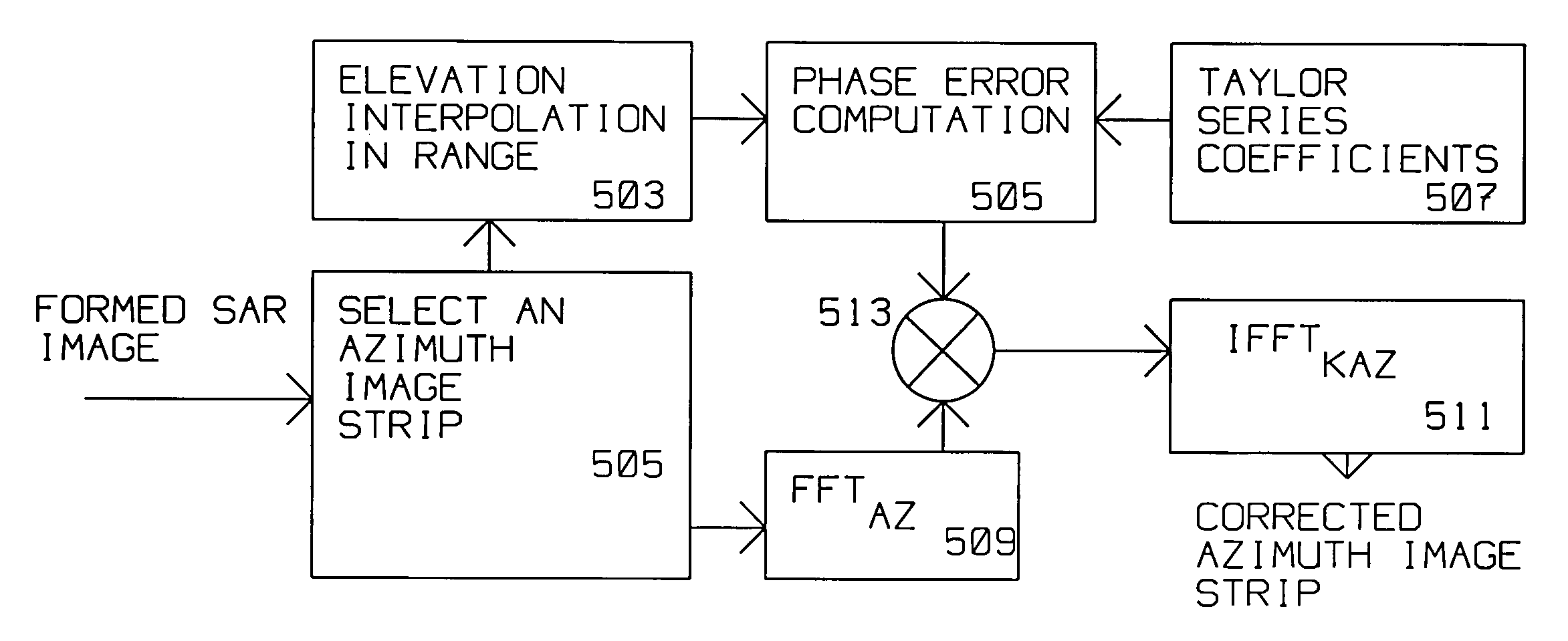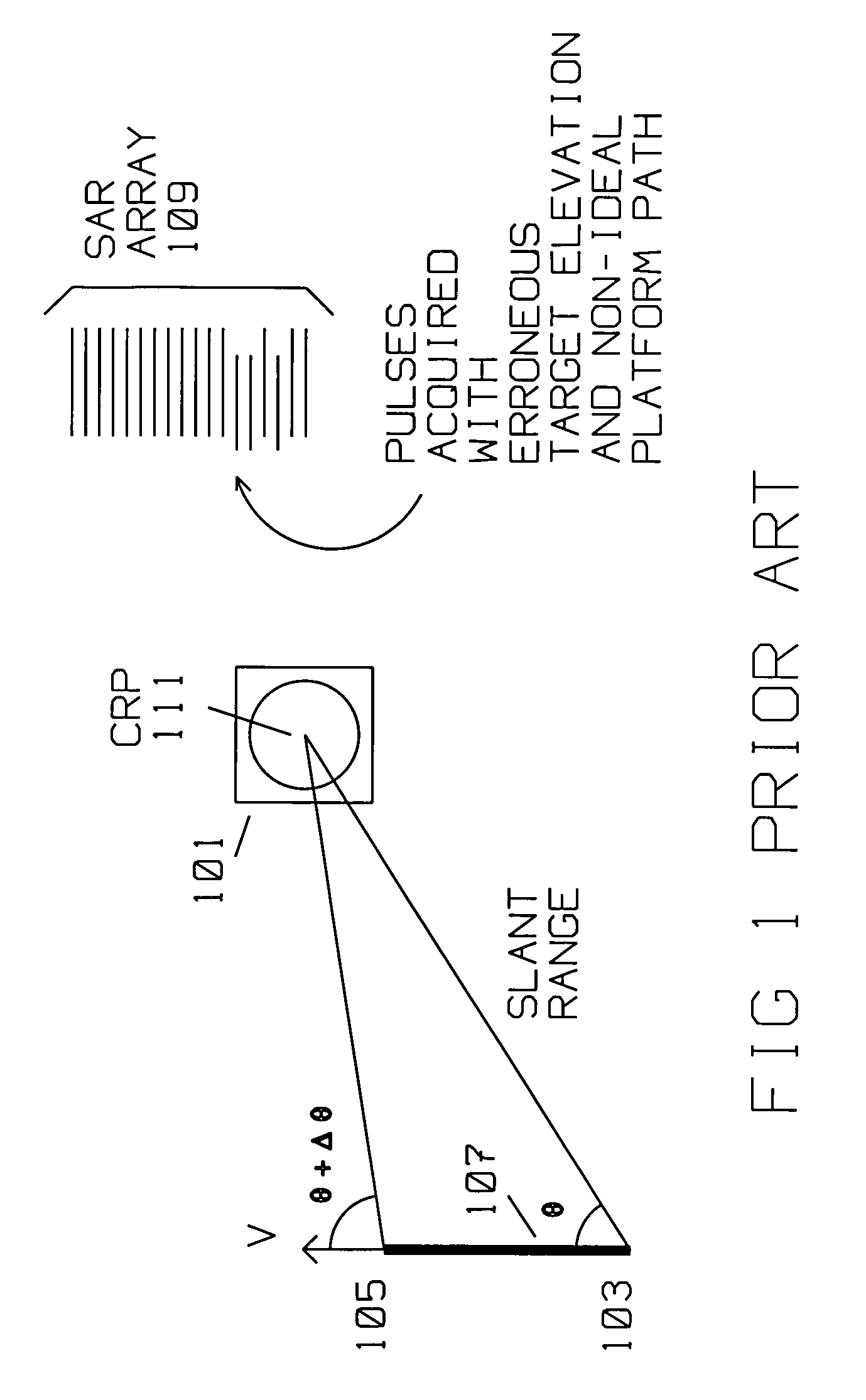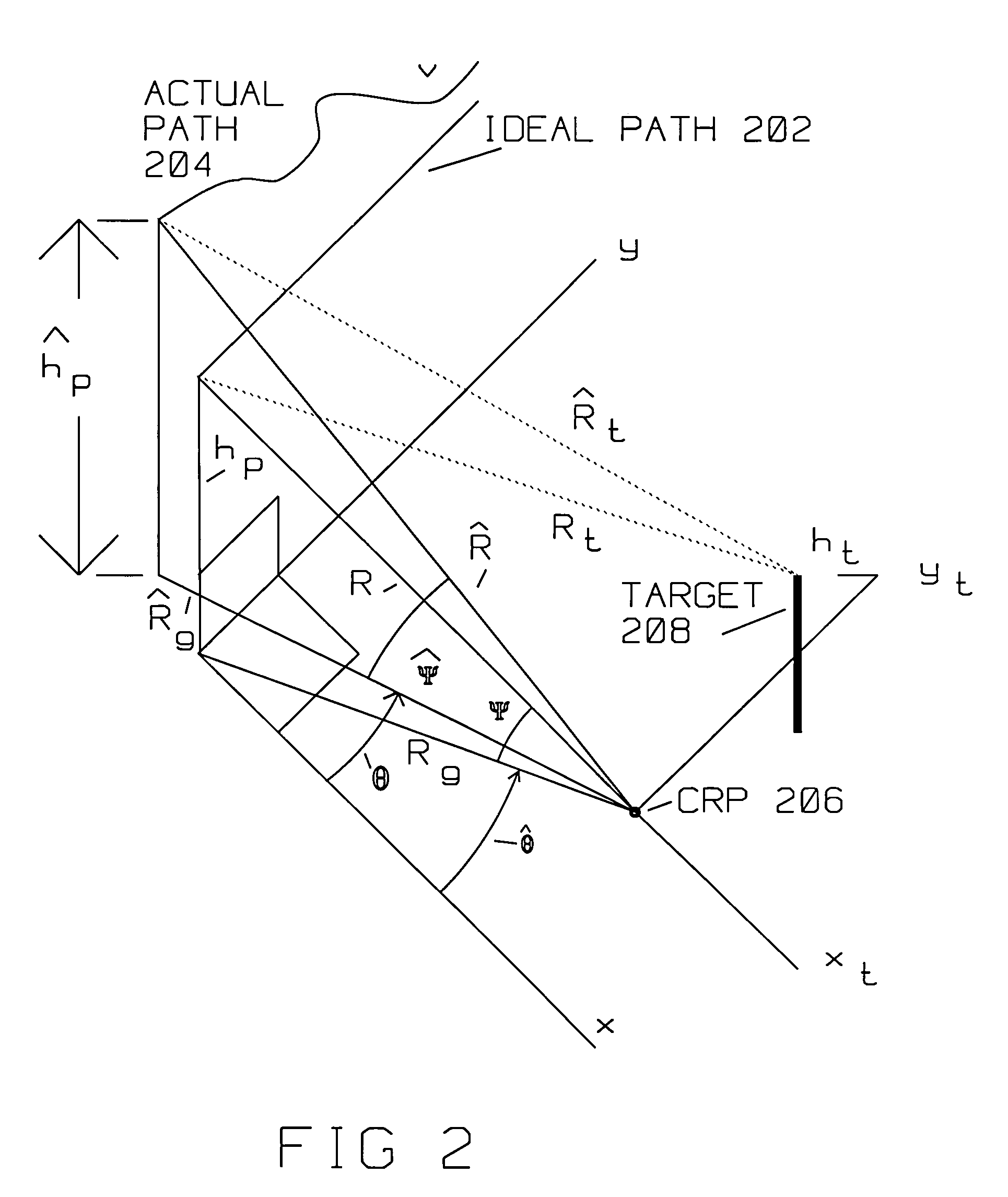Compensation of flight path deviation for spotlight SAR
- Summary
- Abstract
- Description
- Claims
- Application Information
AI Technical Summary
Benefits of technology
Problems solved by technology
Method used
Image
Examples
Embodiment Construction
[0022]In the present disclosure, a SAR image is formed from a sequence of pulses transmitted and reflected from static objects within an area of interest. Received data in a pulse interval is comprised of range samples. The range samples have a fast rate. Conversely, the pulse repetition rate has a slow rate. Both the fast rate and the slow rate are used as inputs for image formation processing.
[0023]FIG. 1 shows the typical prior art geometric relationship between a moving platform carrying a radar transmitter / receiver using Synthetic Aperture (SAR) spot search methods imaging patch 101 by said radar transmitter / receiver. The moving platform is initially at position 103, travels along a rectilinear path 107 with velocity V to position 105. In SAR spot mode applicable in this description, the SAR antenna azimuth is variable at azimuth angle θ to θ+Δθ oriented towards patch 101 as the platform moves with velocity V. The moving platform moves from position 103 to position 105 along pa...
PUM
 Login to View More
Login to View More Abstract
Description
Claims
Application Information
 Login to View More
Login to View More - R&D
- Intellectual Property
- Life Sciences
- Materials
- Tech Scout
- Unparalleled Data Quality
- Higher Quality Content
- 60% Fewer Hallucinations
Browse by: Latest US Patents, China's latest patents, Technical Efficacy Thesaurus, Application Domain, Technology Topic, Popular Technical Reports.
© 2025 PatSnap. All rights reserved.Legal|Privacy policy|Modern Slavery Act Transparency Statement|Sitemap|About US| Contact US: help@patsnap.com



